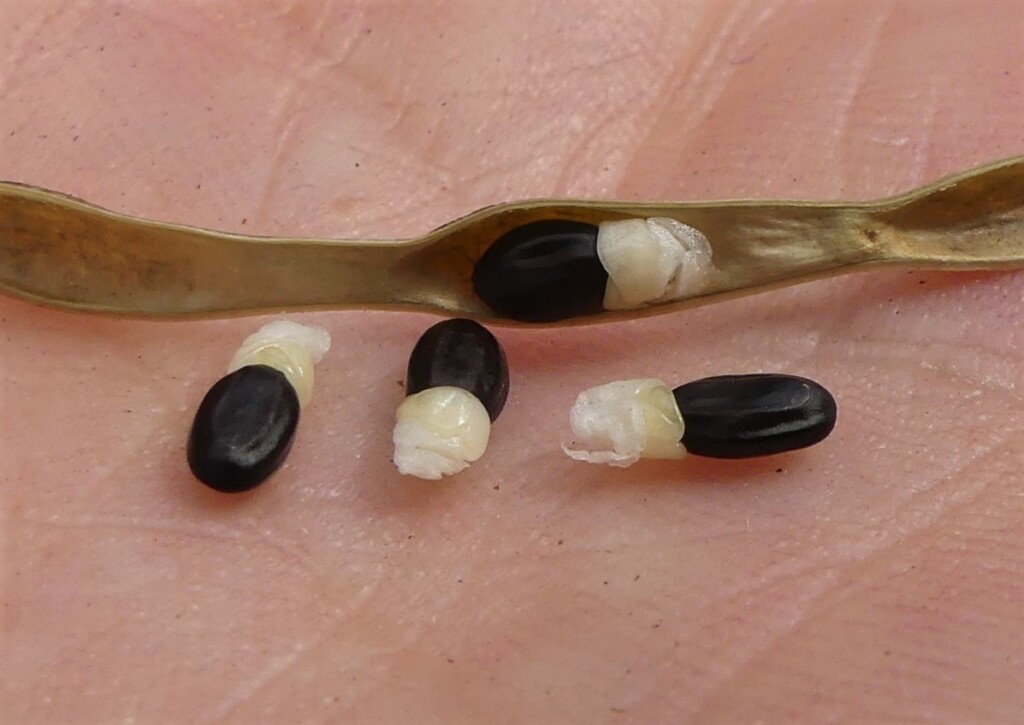Acacia dallachiana
F.Muell. Catkin WattleSlender shrub to small tree, to c. 10 m high. Phyllodes linear, narrowly lanceolate or narrowly elliptic, commonly falcate, 8–18 cm long, 10–35 mm wide, tapering, blunt, grey or blue-green; primary veins 2–4, secondary veins somewhat obscure, reticulate; gland small, 7–15 mm above axil. Spikes 1-several per axil, sessile or almost so, to 6 cm long, mid to deep yellow, often curved; rachis glabrous. Flowers 4-merous, densely packed; sepals united, ciliate. Pod moniliform, papery, mostly straight, c. 6–15 cm long, 2–5 mm wide, glaucous, waxy; seeds elliptic, c. 4 mm long, dull, funicle folded several times, aril cupular. Flowers Sep.–Dec.(–Mar.).
CVU, NIS, HSF, HNF, VAlp. Also NSW. Restricted to subalpine and montane forests on the Buffalo Range, eastern and western slopes of Mt Bogong and the Bogong High Plains and near Sassafras Gap north of Benambra.
Hybrids between A. dallachiana and A. phlebophylla are known from Mt Buffalo.
Entwisle, T.J.; Maslin, B.R.; Cowan, R.S.; Court, A.B. (1996). Mimosaceae. In: Walsh, N.G.; Entwisle, T.J., Flora of Victoria Vol. 3, Dicotyledons Winteraceae to Myrtaceae, pp. 585–658. Inkata Press, Melbourne.
 Spinning
Spinning

